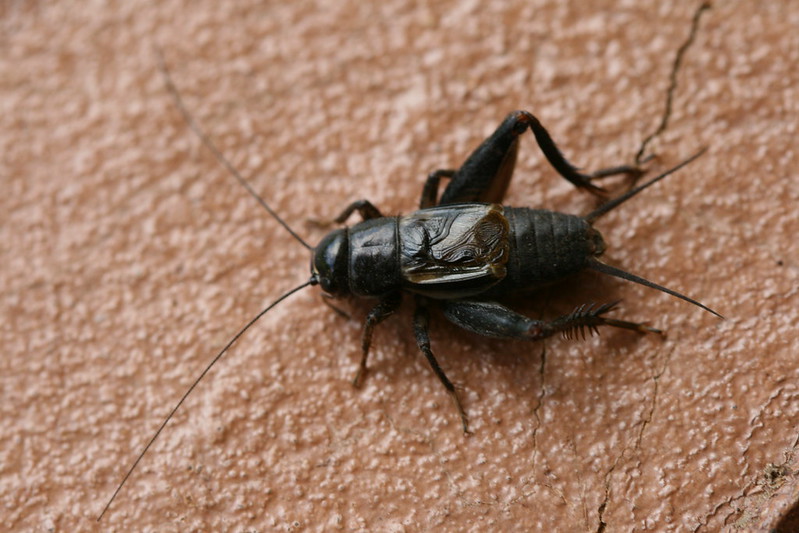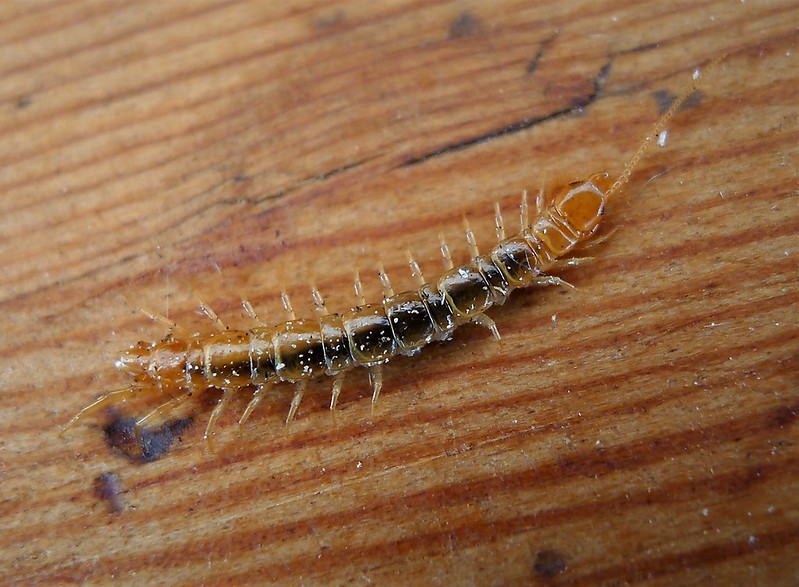Interestingly, there is some variance to the chirps. Here’s the lowdown on some of your resident crickets’ favorite songs:
- A loud and droning chirp is used as a call to a female.
- A softer and quicker chirp pattern is used to woo a (known) nearby female.
- Also, male crickets often have to confront each other to dominate – they also chirp during these confrontations.
- Rarely, crickets will also chirp when they sense trouble. It’s sort of like a warning to others.
Crickets aren’t the only insects that use chirps: Katydids, a species that shares the same order Order (Orthoptera) as crickets, also use chirps for very similar reasons. However, these sounds can also mean that they’re trying to warn off predators, something very unlikely for crickets to do.
What do crickets sound like?
Cricket sounds are low-frequency repetitive noises.
Here’s an example:
The tonality of the sound depends on the gap between the serrations or wing wrinkles (see next section for more).
The sound might be pleasant to some but when heard non-stop, it can quickly become repetitive and frustrating. Those with homes surrounded by weeds, grasses, or wilderness will know the deafening volume a large group of crickets can achieve.
Fun fact: Did you know that crickets chirp according to the temperature? If you manage to count the number of chirps in a 15-second period and add 37 to the count, you’ll get an approximation of the temperature in Fahrenheit. How cool is that!
How do they make that sound?
The chirping sound is made by rubbing the front wings together. The edges of their wings have a serrated pattern. It produces a chirping sound when rubbed against a sharp ridge on the wing (scraper).
So essentially, the scraper from one wing is rubbed against the serrations on the other wing. Imagine running a finger down the teeth of a comb. Crickets just do it very fast.
The technical term for producing vibrations (and consequently sound) this way is “stridulation”.
Do crickets only make noise at night?
Crickets are mostly nocturnal insects, so yes, but there’s more to it than that.
First — in general, crickets prefer dark places. If you see a cricket infestation in a home, you’ll find that they typically concentrate in darker (and moist) regions.
Second — during the day there are too many sounds drowning low-frequency ones, such as people, traffic, appliances, and so on. The nighttime is when nearly everything is dead quiet. Consequently, a low-frequency sound like a cricket chirp is going to be perfectly audible under the quiet of the night sky.
Crickets are also very sensitive to noises and vibrations in general. That’s why they get quiet when you approach them. Usually, predators approach crickets quietly and once a cricket picks up vibration using its tympanal organ (unlike ears that we have), it goes quiet to hopefully throw the predator off its trail.







